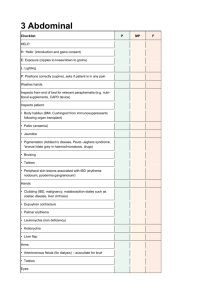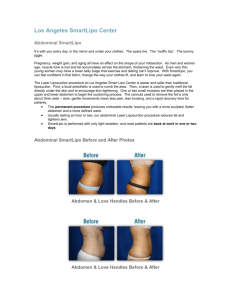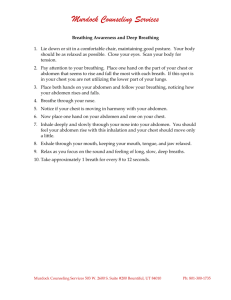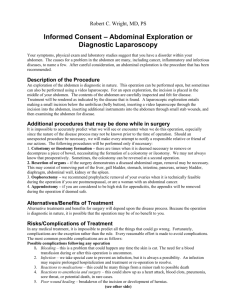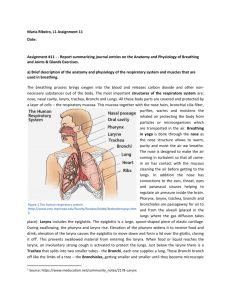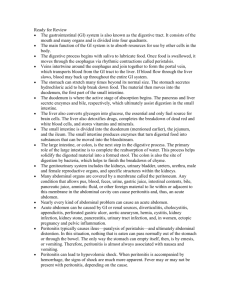Describe the effects of maintaining slight abdominal pressure during
advertisement
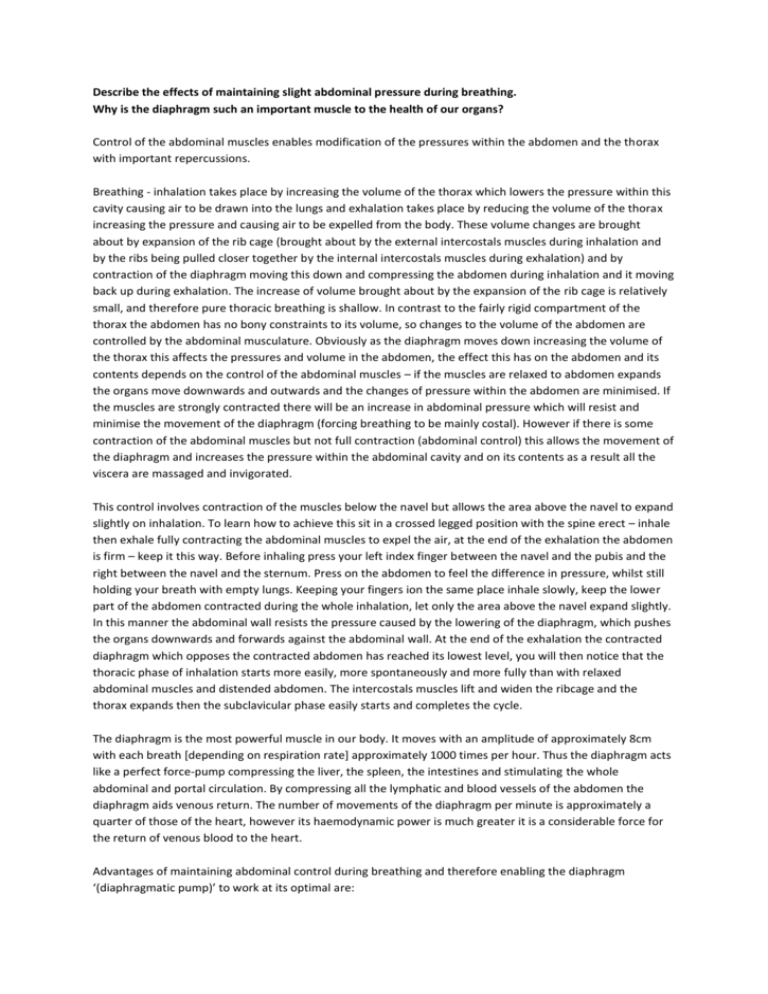
Describe the effects of maintaining slight abdominal pressure during breathing. Why is the diaphragm such an important muscle to the health of our organs? Control of the abdominal muscles enables modification of the pressures within the abdomen and the thorax with important repercussions. Breathing - inhalation takes place by increasing the volume of the thorax which lowers the pressure within this cavity causing air to be drawn into the lungs and exhalation takes place by reducing the volume of the thorax increasing the pressure and causing air to be expelled from the body. These volume changes are brought about by expansion of the rib cage (brought about by the external intercostals muscles during inhalation and by the ribs being pulled closer together by the internal intercostals muscles during exhalation) and by contraction of the diaphragm moving this down and compressing the abdomen during inhalation and it moving back up during exhalation. The increase of volume brought about by the expansion of the rib cage is relatively small, and therefore pure thoracic breathing is shallow. In contrast to the fairly rigid compartment of the thorax the abdomen has no bony constraints to its volume, so changes to the volume of the abdomen are controlled by the abdominal musculature. Obviously as the diaphragm moves down increasing the volume of the thorax this affects the pressures and volume in the abdomen, the effect this has on the abdomen and its contents depends on the control of the abdominal muscles – if the muscles are relaxed to abdomen expands the organs move downwards and outwards and the changes of pressure within the abdomen are minimised. If the muscles are strongly contracted there will be an increase in abdominal pressure which will resist and minimise the movement of the diaphragm (forcing breathing to be mainly costal). However if there is some contraction of the abdominal muscles but not full contraction (abdominal control) this allows the movement of the diaphragm and increases the pressure within the abdominal cavity and on its contents as a result all the viscera are massaged and invigorated. This control involves contraction of the muscles below the navel but allows the area above the navel to expand slightly on inhalation. To learn how to achieve this sit in a crossed legged position with the spine erect – inhale then exhale fully contracting the abdominal muscles to expel the air, at the end of the exhalation the abdomen is firm – keep it this way. Before inhaling press your left index finger between the navel and the pubis and the right between the navel and the sternum. Press on the abdomen to feel the difference in pressure, whilst still holding your breath with empty lungs. Keeping your fingers ion the same place inhale slowly, keep the lower part of the abdomen contracted during the whole inhalation, let only the area above the navel expand slightly. In this manner the abdominal wall resists the pressure caused by the lowering of the diaphragm, which pushes the organs downwards and forwards against the abdominal wall. At the end of the exhalation the contracted diaphragm which opposes the contracted abdomen has reached its lowest level, you will then notice that the thoracic phase of inhalation starts more easily, more spontaneously and more fully than with relaxed abdominal muscles and distended abdomen. The intercostals muscles lift and widen the ribcage and the thorax expands then the subclavicular phase easily starts and completes the cycle. The diaphragm is the most powerful muscle in our body. It moves with an amplitude of approximately 8cm with each breath [depending on respiration rate] approximately 1000 times per hour. Thus the diaphragm acts like a perfect force-pump compressing the liver, the spleen, the intestines and stimulating the whole abdominal and portal circulation. By compressing all the lymphatic and blood vessels of the abdomen the diaphragm aids venous return. The number of movements of the diaphragm per minute is approximately a quarter of those of the heart, however its haemodynamic power is much greater it is a considerable force for the return of venous blood to the heart. Advantages of maintaining abdominal control during breathing and therefore enabling the diaphragm ‘(diaphragmatic pump)’ to work at its optimal are: The increased pressure acts on the lower vena cava – the large blood vessel returning venous blood back to the heart. The rhythmic increase of pressure with each inhalation acts like a pump on the vena cava aiding venous return to the heart the increase of pressure on the organs and viscera also encourages venous return from these organs to the vena cava for return to the heart, in particular this pressure encourages the ‘cleaning out’ of the blood reservoirs in the liver and spleen. (because of the difference in the construction of the walls of the aorta [ the main blood vessel carrying blood from the heart to the sub-diaphragmatic part of the body] this increased abdominal pressure does not affect the flow of blood in this vessel) These two factors mean that the heart works under optimal conditions The systematic compression of the intestines – the seat of general metabolism – aids digestion and assimilation of nutrients Compression of the liver facilitates the flow of bile and generally stimulates hepatic function Compared with ‘gymnastic’ thoracic breathing – ventilation is much improved, the solar plexus is decongested, digestion is improved and food is better assimilated, less chance of constipation, anxiety is reduced and sleeping improves. Compared with abdominal breathing with no abdominal control, there is no distension of the abdomen caused by the viscera being engorged with excess blood, blood circulation is improved, digestion is improved and less pockets of gas accumulate, less constipation and there is avoidance of acquiring a ‘spare tyre’ as distended abdomen soon fills up with a roll of fat. (People who have distended abdomen need to strengthen the abdominal muscles before they can exert sufficient force to contract the abdominal muscles with the necessary force.
